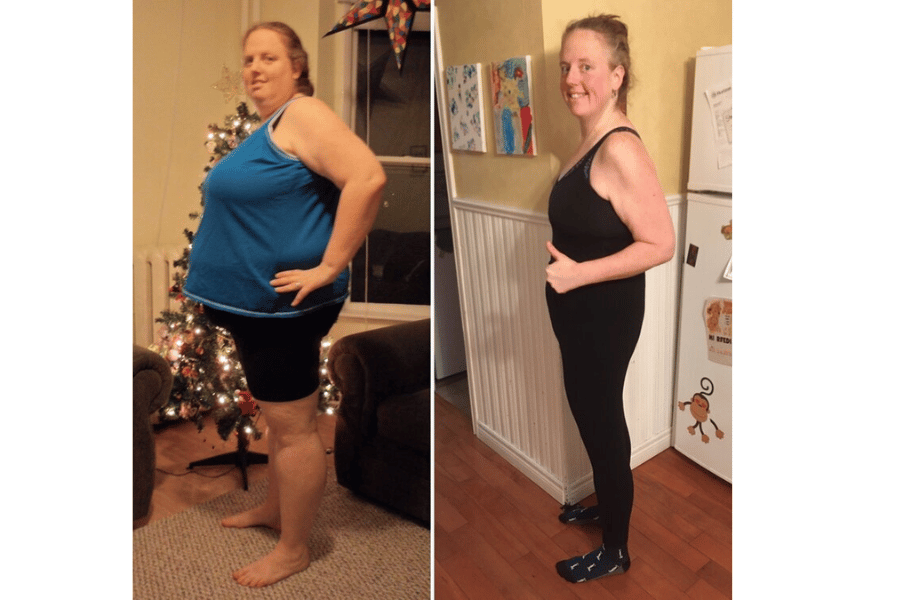Welcome to “Chill Out, Slim Down: Your Guide to Intermediate Fasting for Weight Loss This Winter.” As we delve into the winter season, maintaining a healthy weight becomes a top priority for many. In this comprehensive guide, we will explore the concept of intermediate fasting, a powerful tool for achieving your weight loss goals during the colder months.
Winter often brings with it the temptation of comfort foods and reduced physical activity, making weight management a challenging endeavor. However, by embracing intermediate fasting, you can navigate these challenges effectively. Let’s embark on a journey to understand intermediate fasting and discover how it can be your key to shedding those extra pounds this winter.
In the sections that follow, we’ll cover the various aspects of intermediate fasting, its benefits, practical tips to get started, and how to overcome winter-specific challenges. We’ll also delve into the synergy between intermediate fasting and exercise, monitoring your progress, and addressing common questions about this approach.
By the end of this guide, you’ll be well-equipped with the knowledge and strategies to embark on your intermediate fasting journey with confidence, ensuring a healthier and slimmer winter season. Let’s dive in!

Understanding Intermediate Fasting
To embark on a successful winter weight loss journey with intermediate fasting, it’s essential to grasp the fundamentals of this approach. Let’s explore what intermediate fasting is, the different types of intermediate fasting methods, and how it distinguishes itself from other diets.
What is Intermediate Fasting?
Intermediate fasting, also known as time-restricted eating, is a dietary approach that focuses on when you eat rather than what you eat. It involves dividing your day into specific windows for eating and fasting. During the fasting window, you abstain from caloric intake, allowing your body to utilize stored fat for energy.
Different Types of Intermediate Fasting Methods
Intermediate fasting offers flexibility, allowing you to choose a method that aligns with your lifestyle and preferences. Here are some common intermediate fasting methods:
- 16/8 Method: This method involves fasting for 16 hours each day and restricting your eating to an 8-hour window. For example, you might eat between 12:00 PM and 8:00 PM, fasting from 8:00 PM to 12:00 PM the next day.
- 5:2 Method: In this approach, you eat normally for five days of the week and restrict your calorie intake to around 500-600 calories on the remaining two non-consecutive days.
- OMAD (One Meal a Day): OMAD involves fasting for 23 hours and consuming all your daily calories in a single meal. This method is suitable for individuals who prefer a more extended fasting period.
- Alternate-Day Fasting: This method alternates between days of normal eating and days of fasting or consuming very few calories.
How Intermediate Fasting Differs from Other Diets
Intermediate fasting sets itself apart from traditional diets in several ways:
- Simplicity: Unlike complicated diet plans that require tracking specific foods or counting calories, intermediate fasting simplifies the eating process by focusing on when you eat.
- Metabolic Benefits: Intermediate fasting triggers metabolic changes that promote fat burning and improve insulin sensitivity, potentially leading to more effective weight loss.
- Sustainability: Many individuals find intermediate fasting easier to sustain in the long term due to its flexibility and lack of dietary restrictions.
- Health Benefits: Beyond weight loss, intermediate fasting has been associated with various health benefits, including improved heart health, reduced inflammation, and enhanced brain function.
Understanding the core principles of intermediate fasting sets the stage for a successful winter weight loss journey. In the following sections, we’ll delve deeper into the weight loss benefits of intermediate fasting and provide practical guidance on how to get started.

Benefits of Intermediate Fasting for Weight Loss
Now that we have a foundational understanding of intermediate fasting, it’s time to explore the numerous benefits it offers for effective winter weight loss. Intermediate fasting isn’t just about shedding pounds; it’s about optimizing your body’s metabolism and promoting sustainable, healthy weight management.
Weight Loss Benefits of Intermediate Fasting
- Enhanced Fat Burning: One of the primary benefits of intermediate fasting is its ability to kickstart fat burning. During the fasting period, your body depletes its glycogen stores and begins using stored fat for energy. This process, known as lipolysis, leads to weight loss.
- Caloric Restriction: Intermediate fasting naturally limits your calorie intake because you have a shorter eating window. This caloric restriction contributes to weight loss by creating an energy deficit, where you burn more calories than you consume.
- Improved Insulin Sensitivity: Intermediate fasting can enhance insulin sensitivity, allowing your body to use insulin more effectively. This is crucial for preventing excess glucose from being stored as fat and maintaining stable blood sugar levels.
- Metabolic Boost: Fasting periods trigger metabolic adaptations that may increase your resting metabolic rate (RMR). A higher RMR means your body burns more calories even at rest, further supporting weight loss.
- Appetite Regulation: Many people find that intermediate fasting helps regulate their appetite. Over time, you may become more in tune with your body’s hunger cues and reduce overeating.
Scientific Evidence Supporting Intermediate Fasting
Numerous studies have examined the effects of intermediate fasting on weight loss and overall health. Notable findings include:
- A study published in the journal “Cell Metabolism” found that time-restricted eating (similar to intermediate fasting) led to a reduction in body weight and improved fat mass.
- Research published in “Obesity” demonstrated that intermittent fasting resulted in significant weight loss, particularly in individuals with obesity.
- Studies on animals and humans have shown that intermittent fasting can promote autophagy, a cellular cleaning process that contributes to overall health and longevity.
These scientific findings underscore the effectiveness of intermediate fasting as a weight loss strategy, making it a valuable tool for those looking to slim down this winter.
Getting Started with Intermediate Fasting
Now that we’ve explored the compelling weight loss benefits of intermediate fasting, it’s time to take practical steps to get started. Transitioning into an intermediate fasting routine for winter weight loss can be both manageable and effective when done correctly. Let’s walk through the essential steps to embark on your journey.
1. Assess Your Current Eating Patterns
Begin by assessing your current eating habits. Take note of your typical meal times, snacking tendencies, and the duration of your overnight fast. This assessment provides a baseline for customizing your intermediate fasting plan.
2. Choose an Appropriate Fasting Window
Intermediate fasting involves defining specific windows for eating and fasting. A common approach is the 16/8 method, where you fast for 16 hours and eat during an 8-hour window. However, you can adjust these windows to suit your lifestyle and preferences. Consider starting with a less restrictive window, such as 14/10, and gradually progress to longer fasts if desired.
3. Plan Your Meals
During the eating window, it’s crucial to consume balanced and nutritious meals. Focus on whole foods, lean proteins, fruits, vegetables, and healthy fats. Avoid excessive processed foods, sugary snacks, and high-calorie beverages. Meal planning can help you make the most of your eating window and support your weight loss goals.
4. Stay Hydrated
While fasting, it’s essential to stay well-hydrated. Water, herbal teas, and black coffee (without added sugars or cream) are typically allowed during the fasting period and can help curb hunger.
5. Gradual Transition
If you’re new to intermediate fasting, consider a gradual transition. Start with a shorter fasting window and gradually increase it over time. This approach can make the adjustment more manageable and reduce the risk of discomfort.
6. Listen to Your Body
Pay attention to your body’s signals. If you experience extreme discomfort, dizziness, or other adverse effects, it’s essential to listen to your body and adjust your fasting plan accordingly. Always prioritize your health and well-being.
7. Be Consistent
Consistency is key when practicing intermediate fasting. Try to adhere to your chosen fasting schedule consistently, even on weekends or during social events. This consistency will help your body adapt to the new eating pattern.
8. Consult a Healthcare Professional
Before starting any fasting regimen, especially if you have underlying health conditions, it’s advisable to consult with a healthcare professional. They can provide personalized guidance and ensure that intermediate fasting is safe and suitable for your individual needs.
By following these steps, you’ll be well on your way to implementing intermediate fasting for winter weight loss effectively. In the next section, we’ll address some of the unique challenges that the winter season presents and provide strategies to overcome them while maintaining your fasting routine.

Intermediate Fasting and Winter Challenges
Winter brings its own set of challenges when it comes to maintaining a weight loss regimen, including intermediate fasting. The season is often associated with hearty comfort foods, holiday gatherings, and decreased motivation for physical activity. However, with the right strategies, you can successfully navigate these challenges and stay on track with your weight loss goals. Let’s explore how to incorporate winter-approved practices into your intermediate fasting plan.
1. Addressing the Comfort Food Temptation
Winter tends to make us crave warm and indulgent comfort foods, which can be high in calories and not conducive to weight loss. To overcome this challenge:
- Opt for Healthier Alternatives: Seek out healthier versions of your favorite comfort foods. For example, choose homemade soups with lean proteins and vegetables instead of heavy cream-based soups.
- Practice Mindful Eating: Pay attention to portion sizes and savor your meals mindfully. This can help you enjoy comfort foods in moderation without overindulging.
- Balance with Seasonal Produce: Winter also offers an abundance of nutritious seasonal produce like Brussels sprouts, sweet potatoes, and citrus fruits. Incorporate these into your meals for added flavor and health benefits.
2. Staying Motivated During Colder Months
Colder weather can make outdoor exercise less appealing. However, staying active is crucial for maintaining your weight loss progress. Here’s how to stay motivated:
- Indoor Workouts: Explore indoor workout options like yoga, Pilates, or indoor cycling. These activities can help you stay active while staying warm.
- Set Winter Fitness Goals: Set specific fitness goals for the winter season, such as completing a certain number of workouts per week or trying a new indoor activity.
- Exercise with Friends: Consider joining a winter sports league or fitness class with friends or family to make staying active a social activity.
3. Incorporating Seasonal Foods into Fasting Plan
Winter offers an array of seasonal foods that can complement your intermediate fasting plan. These foods are not only nutritious but also align well with the winter season:
- Soups and Stews: Homemade vegetable or lean protein-based soups and stews are filling and can be consumed during your eating window.
- Root Vegetables: Winter root vegetables like carrots, beets, and parsnips are versatile ingredients for creating satisfying and healthy meals.
- Citrus Fruits: Citrus fruits like oranges and grapefruits are packed with vitamins and can be a refreshing addition to your winter meals.
By adapting your intermediate fasting plan to include these seasonal foods, you can maintain variety and flavor while working toward your weight loss goals.
Combining Intermediate Fasting with Exercise
Combining intermediate fasting with the right exercise routine can supercharge your weight loss efforts during the winter season. While it’s tempting to stay indoors and hibernate during the colder months, staying active is crucial for burning calories and maintaining a healthy metabolism. In this section, we’ll explore how to incorporate exercise into your intermediate fasting plan for winter weight loss.
1. The Benefits of Winter Exercise
Before diving into specific workouts, let’s understand why winter exercise is essential:
- Calorie Burn: Cold weather can increase calorie burn as your body works harder to stay warm. This means you can potentially burn more calories during winter workouts.
- Mood Enhancement: Exercise releases endorphins, which can help combat the winter blues and boost your mood.
- Weight Maintenance: Regular exercise helps prevent winter weight gain, which is common due to holiday feasting and reduced outdoor activity.
2. Indoor Exercise Options
- Home Workouts: You don’t need a gym membership to stay active. There are numerous home workout programs available, including bodyweight exercises, yoga, and Pilates.
- Dance Workouts: Dancing is a fun way to stay active indoors. You can follow dance workout videos or take online dance classes.
- Indoor Sports: Consider indoor sports like racquetball, squash, or indoor swimming if you have access to facilities.
3. Outdoor Winter Activities
If you prefer outdoor activities despite the cold, there are plenty of options:
- Winter Sports: Embrace winter sports like skiing, snowboarding, ice skating, or snowshoeing. These activities provide an excellent cardiovascular workout.
- Hiking: Winter hiking can be a serene and calorie-burning activity. Just ensure you have the right gear and stay safe.
- Cold Weather Running: If you’re an avid runner, don’t let the cold stop you. Invest in cold-weather running gear to stay warm.
4. Safety Precautions
When exercising in winter, safety is paramount:
- Layer Clothing: Dress in layers to stay warm, and remove layers as you heat up during your workout.
- Stay Hydrated: Even in cold weather, it’s essential to stay hydrated. Drink water before, during, and after your workout.
- Warm-Up: Spend extra time warming up in colder weather to prevent injury.
- Watch for Icy Surfaces: Be cautious of icy patches on sidewalks and roads, and wear appropriate footwear.
- Know Your Limits: If conditions are extreme, consider indoor workouts for safety.
5. Combining Exercise with Fasting
When should you exercise while practicing intermediate fasting? The ideal time to work out is during your eating window, as your body will have the necessary fuel for physical activity. Aim to schedule your workouts after breaking your fast or just before your next meal.
By combining the benefits of exercise with intermediate fasting, you’ll not only burn calories but also enhance your metabolism and fat-burning potential. In the next section, we’ll explore how to manage stress and improve sleep during the winter season, which are vital components of a successful weight loss plan.

Managing Stress and Sleep for Winter Weight Loss Success
Managing stress and ensuring quality sleep are crucial components of a successful winter weight loss plan when practicing intermediate fasting. The winter season can bring its own set of stressors, including holiday preparations, family gatherings, and the added pressure of maintaining a healthy lifestyle. Additionally, colder and darker days can disrupt sleep patterns. In this section, we’ll explore strategies to effectively manage stress and improve sleep to support your weight loss goals.
1. Stress Management Techniques
- Mindfulness Meditation: Incorporating mindfulness meditation into your daily routine can help reduce stress levels. It allows you to stay present, manage your thoughts, and alleviate anxiety.
- Breathing Exercises: Deep breathing exercises can be done anywhere and are effective for calming the nervous system. Practice deep, slow breaths to reduce stress.
- Time Management: Plan your days efficiently to minimize stress. Create to-do lists, prioritize tasks, and allocate time for relaxation.
- Social Support: Stay connected with friends and loved ones. Sharing your feelings and experiences can provide emotional support during challenging times.
2. Improving Sleep Quality
- Establish a Routine: Stick to a consistent sleep schedule, even on weekends. Going to bed and waking up at the same times every day can regulate your body’s internal clock.
- Create a Relaxing Bedtime Routine: Wind down before bed by engaging in calming activities like reading, taking a warm bath, or practicing gentle yoga.
- Optimize Sleep Environment: Ensure your bedroom is conducive to sleep. Keep the room dark, quiet, and at a comfortable temperature.
- Limit Screen Time: Reduce exposure to screens (phones, computers, TVs) at least an hour before bedtime, as the blue light emitted can disrupt sleep.
- Mindful Eating: Be mindful of what you eat close to bedtime. Avoid heavy or spicy meals, caffeine, and alcohol, as they can interfere with sleep.
3. Balancing Winter Activities
- Stay Active: Regular physical activity can help reduce stress and improve sleep quality. Engage in winter-friendly exercises, as discussed in the previous section.
- Practice Self-Care: Dedicate time to self-care activities you enjoy, such as reading, taking baths, or pursuing hobbies. These activities can help you relax and de-stress.
- Set Realistic Expectations: Understand that winter comes with its unique challenges. Set achievable goals for your weight loss journey and be kind to yourself.
- Seek Professional Help: If stress or sleep issues persist, consider consulting a healthcare professional or therapist for guidance and support.
Managing stress and ensuring restful sleep are essential for maintaining your overall well-being and supporting your weight loss efforts. In the next section, we’ll address common issues that may arise during your intermediate fasting journey in the winter season and provide strategies for troubleshooting and staying on course.
Here are some frequently asked questions (FAQs) related to intermediate fasting for weight loss during the winter season:
Q1: What is intermediate fasting, and how does it work for weight loss in winter?
Intermediate fasting is an eating pattern that alternates between fasting periods and eating windows. It can aid winter weight loss by promoting fat burning, improving metabolism, and reducing calorie intake.
Q2: Can I drink water or other beverages during fasting hours?
Yes, staying hydrated is essential. You can drink water, herbal tea, or black coffee (without added sugar or cream) during fasting hours. These beverages can help curb hunger.
Q3: Are there any potential side effects to be aware of when practicing intermediate fasting in winter?
Common side effects can include hunger, cravings, and initial fatigue. However, these often subside as your body adjusts. If you experience persistent issues, consult a healthcare professional.
Q4: How long should I follow intermediate fasting for effective weight loss during winter?
The duration varies from person to person. It’s important to choose a fasting schedule that suits your lifestyle and goals. Some practice it daily, while others prefer specific days of the week.
Q5: Are there any supplements that can help boost metabolism in winter while practicing intermediate fasting?
Consult a healthcare professional or dietitian before taking any supplements. Some people find that supplements like green tea extract or caffeine can support metabolism, but individual responses vary.
Q6: Is it normal to experience weight fluctuations during intermediate fasting?
Yes, weight fluctuations are common and can result from factors like water retention and meal timing. Focus on long-term trends rather than daily fluctuations.
Related Posts :
- En Active Keto Gummies Vs Weight Watchers Which Approach Helps You Achieve Your Weight Loss Goal L605
- En Do Keto Gummies Really Work 2 Ab4z
- En Does Apple Cider Vinegar Help You Lose Weight A 2024 Obwu
- En Discover The Shocking Results Of The Slim Labs Acv Keto Gummies Review 69zf
- En Soaking Feet In Apple Cider Vinegar For Weight Loss 4 College Students Weight Loss Breakthroughs In 2024 Daat